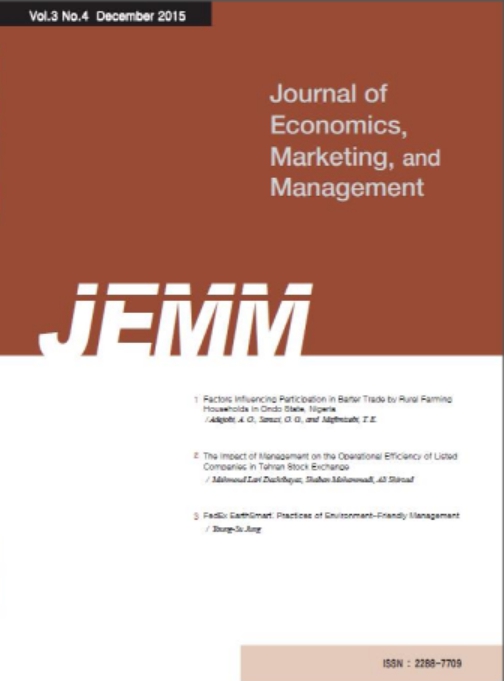- Log In/Sign Up
- E-ISSN2288-7709
- KCI
 E-ISSN : 2288-7709
E-ISSN : 2288-7709
Ikuemonisan, E.S.
Mafimisebi, O.E
Abstract
Women are more disadvantaged than men in many fronts and this confines them to informal sector livelihood activities. Any attempt to improve women's economic status will require information on the organization, cost and returns to investment in the livelihood activities in which they predominate. This is the issue for this study which compared yield performance in artisanal fishing and fresh fish marketing. Primary data collected through multi-stage sampling method were analyzed using inferential statistics, budgeting and regression models. Empirical findings revealed that about 75.0% of fisher folks either had no formal education or acquired only primary school education while 50.0% of marketers had secondary school education. The budgeting model revealed fisher-folks' and marketers' annual net profit to be N2,882,626.00 and N640,227.00, respectively. Profit from fishing was significantly higher than that of fish marketing. At 53.2% for fishing and 40.3% for marketing, returns to investment was better in fishing. Regression model results showed the significant factors influencing returns to each livelihood strategy to include fishing ground, distance covered and years of experience. The major constraint faced by operators of both livelihoods groups was insufficient credit. Despite this, the livelihood strategies were shown to be profitable ventures which contributed to households' consumption expenditure. Organizing women informal sector operators into groups to enhance access to government support and formal credit are recommended for improving livelihood strategy performance.
- keywords
- Fishing, Marketing, Women, Profit, Investment, Ondo State, Nigeria
- Downloaded
- Viewed
- 0KCI Citations
- 0WOS Citations













